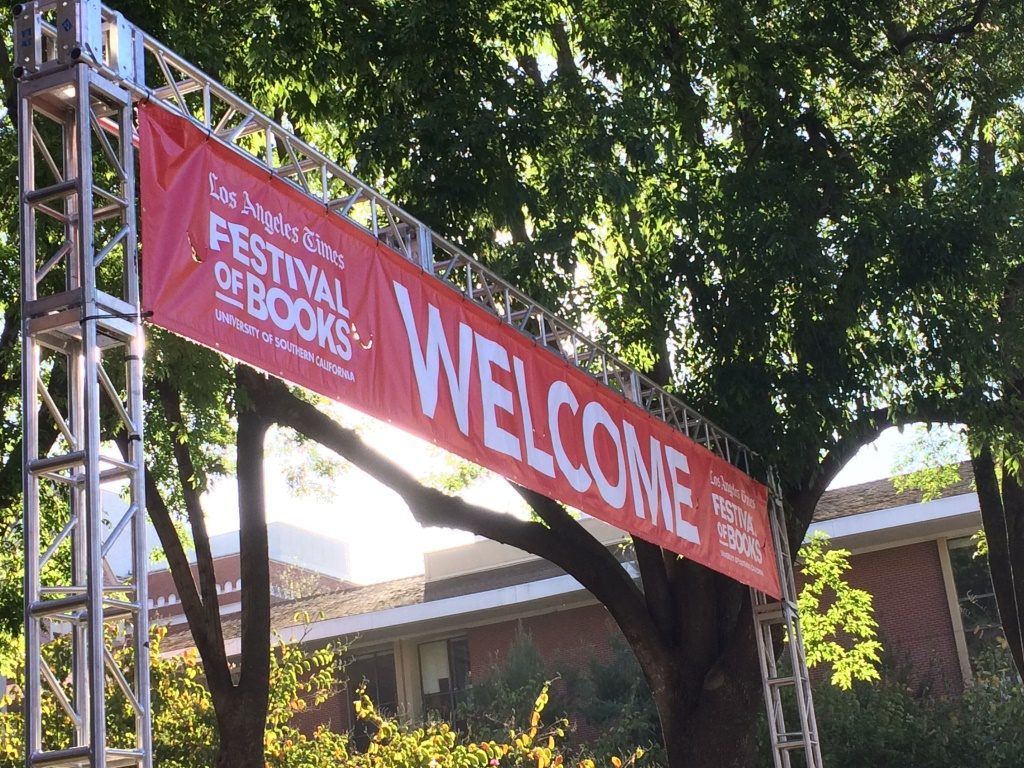I had a fan I’d met at the LA Times Festival of Books drop me a note asking about my self-publishing experience. I sent this response, and then thought it might be worth sharing with a wider audience. So if you’re thinking of DIY publishing, here comes my two cents on it.

Self-publishing is simple and free. You go to KDP on Amazon, upload a document, upload a cover picture and, ta-da, you are published.
And unless you are a very talented and lucky person, the resulting work will be awful.
In the same way that professional ice skaters make figure skating look easy, publishers make creating a book seem simple. But neither is. There are four basic things a publisher does to make a good manuscript into a good book:
- Fix the story. Plot, characters, dialogue. Someone other than the author needs to check that all of these elements ring true and engage a reader. In the same way that enough cats walking across keyboards will eventually write a poem, enough Beta readers will eventually give enough feedback to fine tune a manuscript story. But publishers have editors who are in tune with specific genres and are well read. That editor will spot story problems the casual reader would gloss over.
- Copy edit. There are two levels of this: fixing typos and fixing grammar. The human brain misses typos as we automatically fill in what we know should really be there. I’ve combed through manuscripts multiple times and still missed a “had” that should have been a “has” or some other error that MS Word did not flag. Fixing grammar is tougher. Some grammar errors are subtle, and there are common errors that are acceptable in speech but read like nails on a chalkboard when written. Often when it comes to grammar, the author just doesn’t know what he doesn’t know. Copyediting is a service worth paying for. The longer the book, and the better the edit quality, the more it costs. If you are not paying hundreds of dollars, perhaps a thousand, you probably are not getting a good job done. Seek out a service based on reputation. The one time I had someone copy edit it was a former copyeditor for the AP.
- Format the book. There is way more to this than it seems. Font type, font size, line spacing, paragraph spacing, page margins, gutter margins, heading style, page numbering, header style. Pull five books off your shelf and you will likely see differences in the formats of each one. Likely none of them are wrong. The good news on this is that if you are self-publishing on Amazon, KDP will guide you through setting all of this up, or at least it did when I self-published something. I just found a book with a format that I thought was readable, and set my book up like that. Then you buy a proof copy and double check everything. People will also do this for you for a fee.
- Cover art. Screw this up and the rest does not matter. After generations of being admonished not to do it, people still judge a book by its cover. For all but the gifted few, authors have no business doing this themselves. Covers must look good full size and as a postage stamp, and they have to convey the promise of the book to the reader. That’s a tall order. There are sites that allow you to buy pre-made covers and fill in your title and name, like this place. Or artists will custom make a cover for you, like horror specialist Lynne Hansen at this site.. Pre-made is cheaper. Custom made is a perfect match. It’s like deciding if you buy a suit off the rack or go to a tailor. For my self-published novels, Marissa Anselmo and the City Beneath the Sea is pre-made. Return to Q Island was custom made. For Blood Red Roses I took the picture and made the cover myself: .
So, if you are going to self-publish something, and you want it to compete with traditional publishers, you will likely have to spend some money to get it to that standard. In my experience, it will take at least $1000 investment to even cross that threshold. Then it may be a long road to recoup that investment making a dollar or two a copy from Amazon.
But that recoup depends on getting the word out about your book. And that’s a whole different set of problems. I’m not qualified to give a success formula for that. Reviews from big sites like Publisher’s Weekly guarantee nothing. I’ve had starred reviews there and the books have not sold much. Successful self-publisher JA Konrath can give you a sobering look at his take on book marketing here.
I hope that this note offers some realistic insight. If it was me, until your agent tells you to give up on traditional publishers, I’d wait on putting it out myself. Once you do that, unless it is a runaway hit like The Martian, no publisher will touch it.
Good luck!
-Russell

